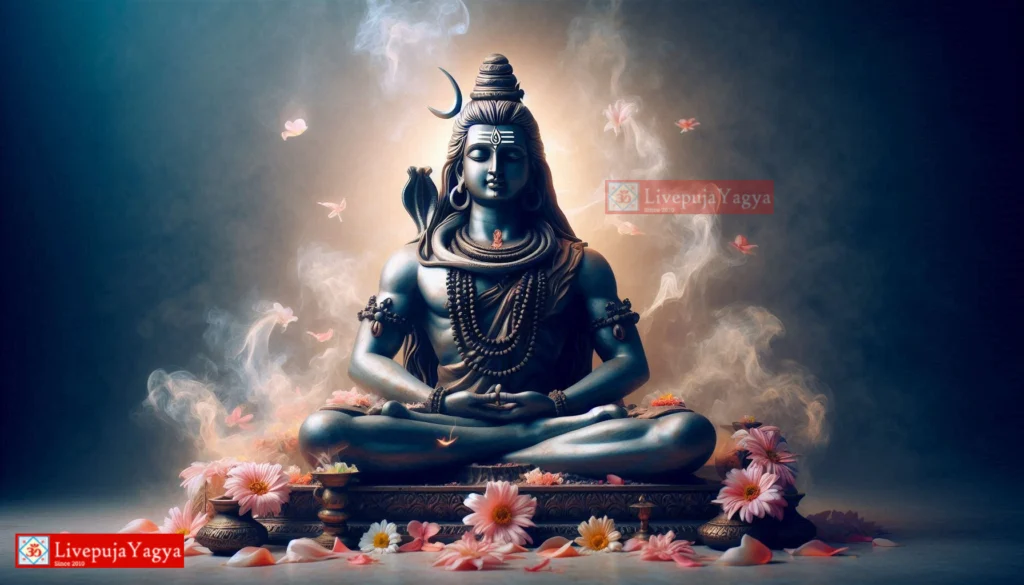Grah Pravesh Puja, a significant ritual in Hindu culture, marks the auspicious entry of a family into their new home. This sacred ceremony is deeply ingrained in the Hindu tradition and holds immense significance. In this blog, we will explore what Grah Pravesh Puja entails, why it is considered mandatory in the Hindu religion, and the spiritual and cultural importance of this cherished tradition.
Understanding Grah Pravesh Puja
Grah Pravesh, often referred to as \”housewarming\” in English, is the traditional Hindu ceremony performed when a family moves into a new house. This elaborate ritual is a way of consecrating the new dwelling, seeking the blessings of deities, and ensuring the harmonious integration of the family into their new abode.
The Grah Pravesh Puja is conducted with great reverence and care, and its specific customs and rituals can vary based on regional and cultural differences within the Hindu community. However, the core essence remains consistent across most traditions.
The ceremony typically includes the following steps:
- Purification of the House: Before the family enters their new home, the premises are thoroughly cleaned and purified. This is often done with a mixture of water, milk, and other sacred substances to remove any negative energies or impurities.
- Vastu Puja: In many cases, a Vastu Puja is conducted to ensure that the house is in harmony with the principles of Vastu Shastra, an ancient Indian architectural science. This is to ensure positive energy flow and overall well-being.
- Ganesh Puja: Lord Ganesha, the remover of obstacles and the deity of auspicious beginnings, is invoked during the Grah Pravesh Puja. A Ganesh idol or image is installed in the house, and a puja is performed to seek his blessings and protection.
- Navagraha Puja: The Navagraha Puja, which involves worshiping the nine celestial deities that represent the planets, is conducted to ensure the balance of cosmic energies within the house.
- Homa (Fire Ritual): A Homa, or sacred fire ritual, is performed to purify the atmosphere and invoke divine blessings. Various offerings, including ghee, grains, and herbs, are placed into the fire while mantras are chanted.
- Offerings and Prayers: The family makes offerings of fruits, flowers, and sweets to the deities. Prayers are recited to seek protection, prosperity, and happiness in the new home.
- Entry into the House: After the puja and rituals are completed, the family enters their new home, typically with the right foot first, which is considered auspicious. They are showered with flower petals as a symbol of welcome and blessings.
- Bhagavad Gita and Holy Books: The family may also place holy books like the Bhagavad Gita, the Quran, the Bible, or other sacred texts in the home to invite the divine wisdom and blessings of their chosen faith.
- Traditional Rituals: Depending on regional customs, there may be additional rituals, such as breaking a coconut, sprinkling holy water, or conducting a Kalash Sthapana (water pot installation).
The Mandate of Grah Pravesh Puja in Hindu Religion
Grah Pravesh Puja is considered mandatory in Hindu religion for several compelling reasons:
- Spiritual Significance: The Hindu religion places a strong emphasis on spirituality and divine blessings. By conducting Grah Pravesh Puja, families seek the blessings of deities and cosmic forces to ensure a harmonious and prosperous life in their new home.
- Purification: The act of purifying the house is symbolic of removing any negative energies or impurities that may have accumulated in the new dwelling. It represents a fresh start and a clean slate for the family.
- Protection: The rituals associated with Grah Pravesh Puja, such as invoking Lord Ganesha and performing a Homa, are believed to offer protection to the family and the home from evil forces and negative influences.
- Harmony and Balance: The rituals ensure the establishment of a harmonious environment within the house. The principles of Vastu Shastra are often followed to create a balanced living space that promotes overall well-being.
- Auspicious Beginnings: Grah Pravesh Puja is considered an auspicious beginning for the family\’s life in their new home. It sets a positive tone for their journey ahead.
- Cultural Heritage: The ritual of Grah Pravesh has been passed down through generations and is an integral part of the cultural and religious heritage of the Hindu community. It connects individuals to their cultural roots and traditions.
The Spiritual and Cultural Importance of Grah Pravesh Puja
Beyond its religious mandate, Grah Pravesh Puja carries significant spiritual and cultural importance:
- Family Bonding: Grah Pravesh is a family affair that fosters unity and togetherness. The rituals bring family members closer, creating a strong sense of belonging and shared values.
- Respect for Ancestral Traditions: By observing Grah Pravesh, individuals pay respect to the traditions and customs handed down by their ancestors. It preserves cultural continuity and heritage.
- Sacredness of the Home: The puja infuses the home with sacredness, reminding family members of the values, ethics, and spirituality they wish to uphold within their living space.
- Blessings for Well-being: The primary purpose of Grah Pravesh Puja is to seek blessings for the well-being, prosperity, and happiness of the family. It is a reminder that the pursuit of material success should be accompanied by spiritual growth and inner peace.
- Honor for Divine Beings: Through the puja, individuals show reverence and gratitude to the deities, acknowledging their role in their lives and seeking their guidance and protection.
In conclusion, Grah Pravesh Puja is not only a mandated ritual in Hindu religion but also a spiritually and culturally significant ceremony. It represents a sacred and joyous transition as a family moves into a new home, seeking blessings, protection, and a harmonious living environment. This cherished tradition not only connects individuals to their cultural heritage but also fosters family unity, spiritual growth, and the pursuit of a prosperous and harmonious life in their new abode.







